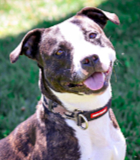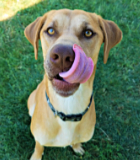How Do I Recognize Stress In My Dog
- This topic has 0 replies, 1 voice, and was last updated 18 years, 8 months ago by .
Viewing 1 post (of 1 total)
Viewing 1 post (of 1 total)
- You must be logged in to reply to this topic.









Home » Topics » Behavior FAQs » How Do I Recognize Stress In My Dog
We are excited to share that we are now partnering with Bonfire, an online store to raise funds by selling Mackenzie’s shirts. Learn more...

 Thank you for your generous donations to Mackenzie's!
The collars are incredible!
Thank you for your generous donations to Mackenzie's!
The collars are incredible!Stress comes from an inability to cope with the current situation. Aggressive or defensive behavior is a symptom. The environment, the situation, or sometimes the owner is the true source of stress.
It is important to recognize the overt signs of stress, because, at this point, our dogs are telling us that they are in a reactive state. The chemical changes are already on the rise. This may be one of the first indications you have from a dog that a problem could escalate.
Signs of stress include:
*Sweaty paw prints.
• Vocalization- whining, growling or frantic barking.
• Dilated pupil. ( The physiological response to an adrenaline “dump”.
• White rim on eyes.
• Flaring whiskers.
* Body tension. (Stiff, rigid appearance and movements, slow movements.)
• Muscle ridge around eyes.
• Muscle ridge around mouth.
• Dog uninterested in food.
• Excessive or frantic activity level.
• Increased or decreased activity level.
• Shallow breathing.
• Rapid breathing or panting with the corner of the mouth drawn back and facial tension.
• Holding breath. (Often a precursor to a bite.)
• Excessive hair loss or exfoliation. (dander appearing on the surface of the coat)
• Hypersalivation. (Drooling)
• Freezing – a dog holding very still with a rigid body.
• Increased heart rate and respiration.
• Flight reactions.
• Fight reactions
• Any behavior you have never seen before may be an indication of stress.
*Please see Calming signals dogs use for small ways you can signal your dog to be calmer.


